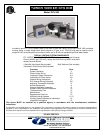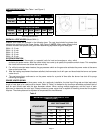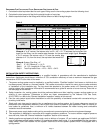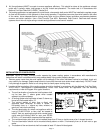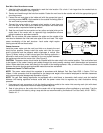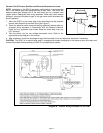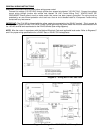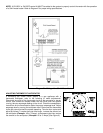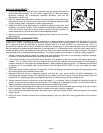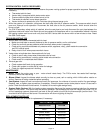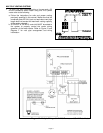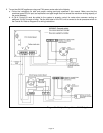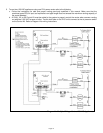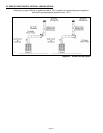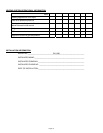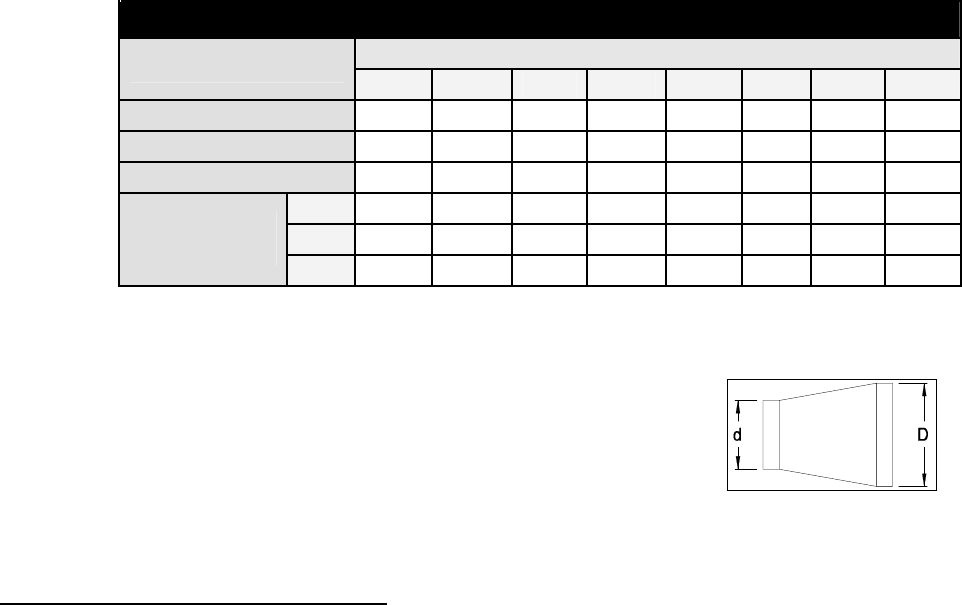
Page 3
P
ROCEDURE FOR CALCULATING TOTAL EQUIVALENT PIPE LENGTH IN FEET
1. Calculate the total equivalent feet for each type of fitting used in the venting system from the following chart.
2. Calculate the total amount of feet for the straight lengths of vent pipe.
3. Add the equivalent feet for the fittings with the total amount of feet of straight lengths.
Table 3
EQUIVALENT LENGTH (FEET) OF VENT PIPE FOR VENT PIPE FITTINGS
VENT PIPE DIAMETER
VENT PIPE FITTINGS
3” 4” 5” 6” 7” 8” 9” 10”
TEE
19 25 31 38 44 50 56 63
90° ELBOW
5 7 9 11 12 14 16 18
45° ELBOW
3 4 4 5 6 7 8 9
1/4 8 11 14 17 19 22 25 28
1/2 5 7 8 10 12 13 15 17
REDUCER
(d/D)*
3/4 2 3 3 4 4 5 6 6
*
Reducer or increaser ratio (d/D) small diameter divided by the larger diameter. (See Figure 3)
Example: 4" to 8" reducer, the reducer ratio is d/D = 4/8 = 1/2. To estimate the equivalent foot
length for the fitting, use the smaller pipe diameter for the equivalent length figure. Example:
4" to 8" reducer; the reducer ratio is 1/2 and the smaller pipe
diameter is 4". So, from the chart, the equivalent feet would be 7
feet.
Example: System Pipe Size = 4"
Step 1 2 – 90° Elbows (4") = 14 Ft.
Step 2 10 - 2 Ft. Lengths of 4" Pipe = 20 Ft.
Step 3 Total Equivalent Feet = 14 Ft. + 20 Ft. = 34 Ft.
INSTALLATION SAFETY INSTRUCTIONS
CAUTION: This device must be installed by a qualified installer in accordance with the manufacturer's installation
instructions. Appliances should have a minimum of 75% combustion efficiency or have a maximum measured flue gas
temperature of 550°F at the inlet of the venter.
1. The power venting system must be installed by a qualified installer. "Qualified Installer" shall mean an individual who
has been properly trained or a licensed installer. The installer must write or imprint his name, phone number and date
of installation on the installation tag. The tag should be attached to the power venter unit. Recording burner and
venting system initial operational information is recommended as a guide for service or burner tune-up. Enter this on
the back page of this manual.
2. Safety inspection of a venting system should be performed before and after installing a power venting system on an
existing or new appliance. Procedures to follow are those recommended by the National Fuel Gas Code,
A.N.S.I.Z223.1 or refer to the "General Installation Inspection" section of this manual.
3. Plan the vent system layout before installation to avoid the possibility of accidental contact with concealed wiring or
plumbing inside walls.
4. Single wall vent pipe may be used to join an appliance to the venting system, but if proper clearances cannot be
maintained from combustible materials, Class B Vent Pipe should be used for gas appliances. Refer to national or
local codes for guidelines. Also, a minimum of 6 inches clearance between the venter housing and combustible
materials must be maintained.
5. Disconnect power supply before making wiring connections to prevent electrical shock and equipment damage.
6. This equipment is designed to overcome minor negative pressure conditions. To ensure extreme negative pressure
does not exist, follow the "General Installation Inspection" section of this manual.
7. Heating appliances equipped with draft hoods, such as boilers or furnaces, LP and natural gas appliances SHOULD
have a secondary spillage switch installed. On appliances without draft hoods, it is recommended that the secondary
safety switch GSK-3 be installed into the system. Gas-fired 30 millivolt power systems MUST be equipped with a
spillage switch.
Figure 3



